I started my undergraduate studies in economics in the late 1970s after starting out as…
Public employment and other matters of scale
I gave a keynote presentation at a recent conference where I showed that public sector employment contractions in Australia were a significant part of the rise in unemployment in Australia since the late 1980s. Had the public maintained its scale (proportion) with the underlying growth in the population then unemployment would have remained low throughout that period. The neo-liberal onslaught and the fiscal surplus fetishism has been a major reason why persistent unemployment occurs. All the nonsense about structural reform and the need to cut workplace protection overlook this fact. The government made a political decision to significantly cut its own employment and quite apart from the fluctuations in the private sector and the increased precariousness in private employment, that decision by government has had devastating consequences. The same situation arises in many advanced western nations under the spell of neo-liberalism. The thing about the current pro-market orthodoxy is that it has lost all sense of proportion. Mass unemployment involving billions of dollars of lost income is deliberately created by policy makers in search of a few pennies (relatively) in making ports work more quickly etc (microeconomic reform). In Europe, all sense of proportion has been lost. Read on …
The graph I presented during that presentation is as follows. The lines are indexes (1966=100). The red line is the labour force (that is, the supply of willing labour), the blue line is public employment and the green line is private employment.
If I went back before 1966, the three lines and indexed at the start of the series then the three lines would be as one, which means that up until the mid-1970s, total employment (and its sectoral components – public and private) grew in proportion with the labour force (and the underlying population growth).
Of course, that meant that in the Post World War II period up to the mid-1970s, Australia enjoyed full employment. But it only did so because public employment maintained scale against population growth.
After the OPEC oil price hikes in the mid- and late-1970s and the major recession in 1974 and again in 1982, private employment failed to keep pace with the labour force and underlying population growth.
Unemployment rose sharply in the late 1970s (and has never come back down to the low levels enjoyed in the full employment period.
During that period, public employment played an attenuating role by growing slightly faster than the labour force.
Governments were already becoming infested with neo-liberal ideas and being told that deficits were bad whereas up until this period the Federal government had run, more or less continuous fiscal deficits to offset the saving desires of the private sector and the external deficits when they occurred.
However, once the neo-liberal dominance in policy was established (in the late 1980s), public employment retrenchment became the norm and you can see what happened.
After that point, private employment increasingly became precarious and part-time with underemployment rising sharply during the 1991 recession and never returning to the low levels experienced prior to that.
The following graph shows the broad labour underutilisation rate in Australia since February 1978 up until August 2014. This is the sum of official unemployment and underemployment expressed as a percentage of the labour force. It ignores shifts in labour participation rates (hidden unemployment).
Imagine what would have happened in the Government had have maintained its total employment in proportion to the growth in the population? The result would have been we would have full employment in jobs although given the trends int he private sector, we probably would still have suffered some underemployment.
The following graph shows the loss in jobs in the public sector in Australia after 1987, which was the year that the then Labor Government decided to pursue fiscal surpluses and started hacking into public employment.
As at August 2014, the public sector would have been 854.5 thousand jobs greater in size (approximately) if the government had have allowed public employment to keep pace with the growth in the labour force.
Unemployment would have been below 2 per cent instead of 6.1 per cent.
A very different world.
And the same problem exists in the US
Warren Mosler tweeted a Fred2 Graph over the weekend that I reproduce here. The graph shows Public Employment in the US from 1939 to 2014 and the fall off since June 2009 is noticeable. The shaded bars represent the recessions (peak to trough).
From May 2008, just after the GFC hit and the US government was pouring cash into Wall Street to underpin the huge salaries and related bonuses that the gangs that had caused the crisis were receiving, the public sector in the US, which should have been leading the way out of the growing labour market meltdown, started to cut employment.
It is clear that the government sector in the US has contributed to the labour market malaise. The lack of strong stimulus from government employment not only allowed the downturn to be deeper and longer than otherwise would have been the case had the government acted responsibility but it has also manifest in a dramatic plunge in public employment.
Responsible fiscal policy should be counter-cyclical. Governments in a fiat-currency system should never cut employment when the private sector is engaging in employment contraction.
The following graph shows the annual growth of employment by sector (total, private and government).
The private sector has returned to a growth rate of around 2 per cent per annum. But it is clear that the public sector overall acted in a pro-cyclical manner with respect to employment (the trough in total is less than the private trough) and has falled to support growth in the early stages of the recovery.
Public employment in the US has been contracting overall since September 2010 – which is an astounding result given the extremely high unemployment in that nation. It has only just started to poke its nose above the zero growth line in the last three months and that is all down to the growth in State and Local employment.
Here is the breakdown of the public employment by level of government from January 2006 to July 2014, indexed to 100 at March 2008, the peak of the last cycle. The data is from the US Bureau of Labor Statistics
The huge spike in Federal employment around May 2010, was temporary hiring by the US Census Department.
We should note that tens of billions of dollars of federal stimulus money went to the states to help them offset major falls in state and local employment. But still they cut spending.
The next graph shows the annual growth in State and Local government employment since the March quarter 1990.
The largest employer in the Education sector in the US is the Local government sector and employment shrank from 8,067 thousand in March 2008 to 7,803 thousand in July 2014, a decline of 2.9 per cent.
State government education sector employment has risen by 2.6 per cent over the same period (2,335 thousand to 2,395 thousand).
At a time when the US should be widening the participation in education to reduce long-term disadvantage, its largest government employer in the sector was hacking into jobs.
These sorts of austerity decisions ensure that the poor policy construction now has costs that span the generations.
To add to this analysis, I assembled some other information, to allow me to understand the scales involved a bit better.
The following Table shows the proportions of total US employment by sector (evaluated for each decade at January). March 2008 was the most recent peak in total employment.
What I found interesting is that, despite claims that the public sector is becoming increasingly large, the evidence suggests that it is not even keeping its proportional employment stake. Most stark is the drop in US Federal government employment shares – from 4 per cent of total employment in January 1970 to 2 per cent now.
There has been no increase in the proportions of employment in State and a decline overall in the Local government share in total employment over the same period. But overall, the US is still dominated by private employment.
How has this translated into employment?
The following Table shows the gains/losses in employment by sector (thousands) and the share of the total employment loss since the crisis began in March 2008 in the US.
Overall, the US economy has now added 777 thousand jobs up until July 2014. But the government sector has contracted by 554 thousand jobs, the vast majority being in the local government sector.
The real employment damage is being done in the State and Local government areas (particularly in provision of local education
The last graph today shows what would have happened in the US if public sector employment had have grown in proportion with the underlying population growth. That is, maintained its scale with the size of the population.
How many extra jobs would have been enjoyed by Americans right now if they had have done that? Around 2,040 thousand – a few million that is!
That would have been a different world altogether.
How could have they done that? Start with a Job Guarantee and then ensure essential sectors such as public education, health and capital infrastucture development are buttressed against crisis.
The pro-cyclical government cutbacks have introduced a vicious circle of income loss, saving loss, wealth destruction, continuing real estate crisis, loss of state and local revenue, further cutbacks according to the application of their inappropriate fiscal rules (balanced budget amendments).
The pro-cyclical nature of state and local government employment is one of the principle reasons the US recession has endured and will ensure the long-term damage to that nation’s vitality and ability to provide high quality services to its people.
The reasoning in the public debate about the future consequences of government fiscal deficits is wrong-headed. The capacity of the US to provide for an ageing society amidst the long-term decline in its industry doesn’t depend on cutting in to public spending now – which is patently causing law and order to deteriorate, the standard of public education and health to slip.
Exactly the opposite response is required. Schools need to be revitalised. Communities need to be sure the streets are safe so that businesses will have an incentive to invest. People need to be mentally and physically well.
And while we are on matters of scale
I know small steps become bigger ones. You have to start somewhere. And all those comforting aphorisms.
Last week, the European Commission (via the Employment, Social Affairs and Inclusion Commission) announced that the – Youth Guarantee: Commission reviews 18 pilot projects.
The press release was broadly reported, tweeted, and generally propagated through the social media as if it was a major achievement.
Recall that the the Youth Guarantee was proposed by the Commission in December 2012 and formally adopted by the European Council of Ministers on April 22, 2013.
At the announcement on February 2013, European Commission President José-Manuel Barroso told the gathering that there was an “urgent need to tackle youth unemployment to the top of Europe’s political agenda”.
Accordingly, after announcing that the princely sum of 6 billion euros would be allocated to the Youth Guarantee (that is not a joke but looks like one), he said that:
Now, with the Youth Guarantee, young people have a real chance of a better future. I call on Member States to translate this agreement into concrete action as swiftly as possible.
So 19 months later, the details of the – Youth Guarantee: progress and achievements of 18 pilot projects – is released.
First, lets recap on the most recent Eurostat data released on August 28, 2014 – Euro area unemployment rate at 11.5%.
Here is the relevant table showing Youth Unemployment (000s and rates).
So across the European Union there a 5 million odd young workers under 25 who want to work but are unable to find employment. In the Eurozone there are 3.3 million.
Now, what about those 18 Youth Guarantee projects that are part of the European Commission’s urgent response to this crisis?
Here is a summary of country and number of youth involved in the program:
1. Italy – Lazio – 700 young people received “career guidance and job counselling, as well as a skills assessment”.
2. Italy – Legnago – 250 250 young people have been involved to date .. who are following motivational workshops in schools. 47 pupils aged 16-18, who are following a school-to-work pathway by participating in seminars and traineeships in companies … 3 out of the 47 young people taking part in a school-to-work workshop found a job at a company where they completed the placement.”
3. Italy – Tuscany – 36 young people participated in “School visits, Company visits, Work placements, In-company guidance and training.
4. Poland – Miechów – “300-350 young people aged 15-24 have participated in the project. The participants have had meetings with their school coordinator and an employment advisor. They have had an opportunity to complete a competency test, receive group and one-on-one guidance, visit an employer and undertake practical exercises.”
5. Romania – Alba County – “80 pupils aged 15-19 have been involved in the project to date. They have received guidance and counselling from 16 specially trained vocational counsellors. They have also completed a special training course on entrepreneurship”.
6. Romania – Neamt County – “103 young people participated in the initial identification of their needs and the preparation of an individualised labour market plan …”
7. United Kingdom – Croydon/London – “75 young people from five Croydon schools (13-18 year olds) have taken part in the pilot activities to date. 45 of them have taken part in a two-week work placement organised by the project, and a regeneration challenge with an employer.”
8. United Kingdom – Hartlepool – “220 students (16-17 years old) from six secondary schools in Hartlepool have taken part in the pilot … one-on-one mentoring and attended school-based careers events as well as a “Choices Event” which is an awareness raising event of post-16 providers and local employers offering apprenticeships and traineeships.”
9. United Kingdom – Pembrokeshire – “104 pupils have been engaged in the project to date; 14 are enrolled in the post-16 part of the project (active support into further education, training or employment) and 90 enrolled in the school-based part.”
10. Ireland – Ballymun/Dublin – “316 young jobseekers attended interviews with public employment service (PES) … 75 have received an offer of work experience or employment, with 63 young people accepting the offer (84%).\\
Note – we don’t know the breakdown between unpaid work experience and actual employment.
11. Lithuania – Vilnius – “270 young people have been involved to date and 70 out of the 270 participants (26%) found employment immediately after their participation in the project.”
12. Spain – Aragón – “10 companies from the logistics and metal sectors are involved in providing trial 6 month apprenticeships for unemployed young people as part of this project”. No data on the numbers that received the jobs but 400 young people were surveyed.
13. Spain – Avilés – “27 young people aged 16-24 have been involved to date … group mentoring meetings have taken place, as well as English language, technical and general training courses. The project offers work placements and training/study visits”.
14. Spain – Cartagena (Murcia) – “65 young people have been involved in the project so far … 9 accepted an offer of (academic) education … 5 accepted an offer of vocational training (VET) … 5 have accepted an offer of employment or work placement”.
15. Spain – Galicia – “50 young people have participated in the project to date … All 50 took part in a training course … 19 have taken part in the advice phase, which includes practical advice on taking forward a business idea and formation of a business plan … 28 have participated in work placements … 22 of the participants will go into self-employment once the training is complete …”
So you create your own job! The classic neo-liberal dream but hardly a Youth Guarantee.
16. Spain – Gijón/Asturias – “100 young people have been involved to date:60 men and 40 women, 31 with university education, 29 with vocational education and 40 without secondary education or secondary education at most …
The activities delivered to date include career guidance, an assessment of ICT skills and coaching … Future activities will include sessions on volunteering, self-employment, a second session on career guidance and a second session on coaching.”
The Youth Guarantee now extends to volunteering for unpaid work!
17. Spain – Valencia – “More than 20,000 young people were informed of the project through a large scale dissemination campaign … out of which … 225 filled in an online registration form to participate in the project, 5 young people have participated in training, and 18 have begun a period of on-the-job learning in an enterprise.”
You can count the number of jobs but you won’t need much more than about one hand!
Its all a matter of scale. How can anyone take the intent of the Commission seriously. They could have created millions of jobs within a few months if they really wanted to act urgently and solve the crisis.
So much for urgency.
When Argentina entered crisis at the end of 2001 and introduced their Head of Households program (guaranteed number of hours of work per household) they created more than 700 thousand jobs in 6 months!
Its all a matter of priorities!
For the sake of honor – when scale and proportion is totally violated
The European Commission has a strange way of acknowledging outright failure. Last Thursday, its outgoing President José Manuel Barroso received a major honory academic title from a university in Budapest.
The report – President Barroso receives Corvinus University Honoris Causa – tells all.
Barros0 has collected a few of these honorary degrees from academic institutions that clearly don’t think much of who they associate with. At last count he had 21 of them!
Now that’s inflation.
For those who don’t already know these titles come from the – Latin – “for the sake of honor”.
I suppose one should parade around like that in the photo below (at the recent awarding ceremony) when the Commission you preside over has overseen millions of extra people losing their jobs, economic growth negative for most of the last 5-6 years, and a generation of teenagers in many countries becoming adults without ever having had the chance to work.
And, on that sickening note … I declare …
That is enough for today!
(c) Copyright 2014 Bill Mitchell. All Rights Reserved.
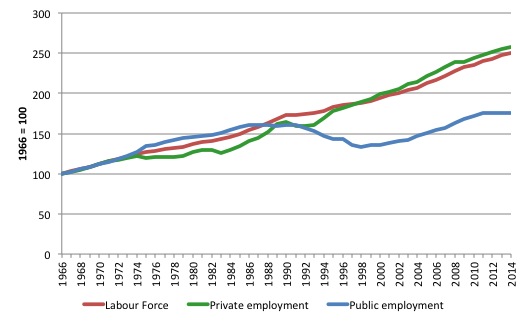
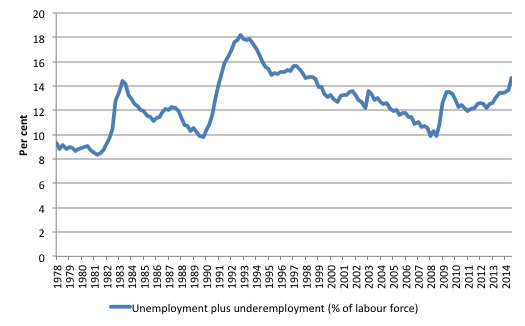
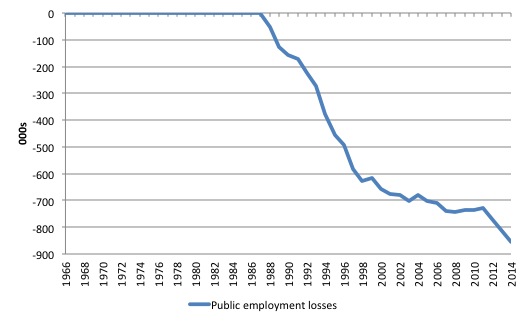
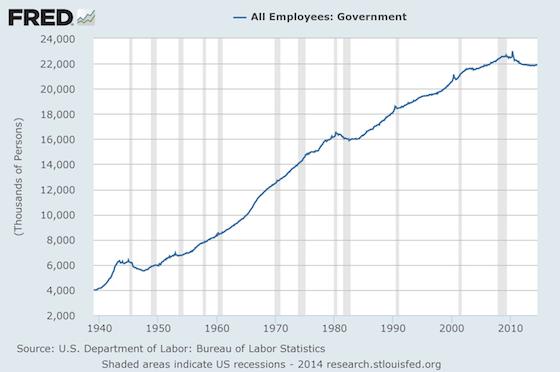
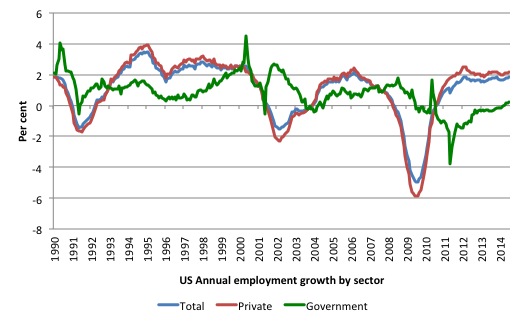
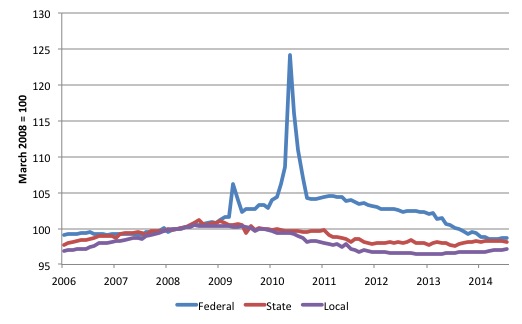
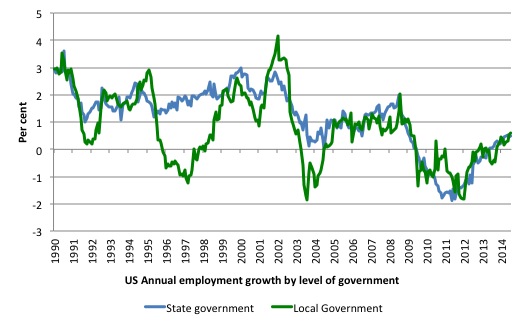
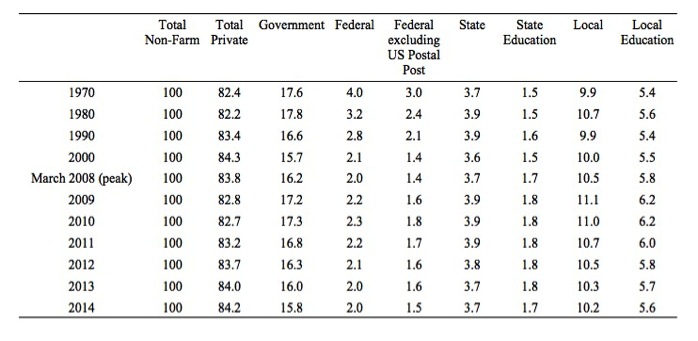

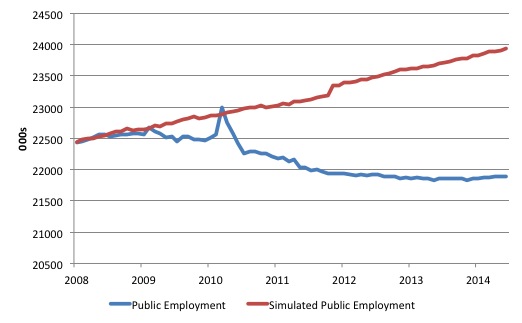


Great blog Bill. You bring facts which SHOULD (though sadly dont) enable a progressive to stop any rabid monetarist or neo-lib in their tracks.
In trying to spread the message of this one I think we should also relate the fact that the lower unemployment brought about by what you highlight would lead to Greater rights and Higher wages, rather than less and lower; which would be the first query I am expecting from those I will pass this on to.
In related news, new oversights in the US are being brought in which mean financial institutions must hold a certain amount of highly liquid assets. These will only count if they are recognised as such by the fed. http://www.federalreserve.gov/newsevents/press/bcreg/20140903a.htm
The danger here is that local and state bonds will NOT count! (even though some B rated corp bonds will, of course ratings are highly flawed but Im sure you can expand that if you make a blog about this) If the institutions being dumping the state and local bonds this could have highly negative consequences for a number of regions.
Detroitisation anyone?
Bill –
Surely if they’d done that, the private sector would have also reacted differently? Therefore the result is meaningless!
Your point about the need for countercyclical spending is an important one, and we all know the government made employment a lower priority than it deserves to be. But was there really any good reason not to shift the bulk of jobs growth to the private sector?
AS – Yes,lots of good reasons not to shift jobs to the private sector.
One of them is the fact that the private sector is not interested in tasks which will not provide a profit. That area covers just about all public facilities which we tend to take for granted until they fall over either because they have been privatised or the idiot government cuts expenditure to the bone for ideological reasons.
One very prominent example in Australia is border control. And I’m not just referring to illegal immigrants
Dear Aidan (2014/09/16 at 2:29)
You correctly note that “Surely if they’d done that, the private sector would have also reacted differently?”.
Yes, in all likelihood they would have behaved more like they did in the 1960s when there were more vacancies than unemployed. They provided more training to attract workers, increased productivity through capital investments and created better workplaces to retain labour. Australia grew faster, had higher productivity, higher real wages and no unemployment (above frictions) and no underemployment.
That would have been something!
Further, if there had ever been a time in history that the private sector had created sufficient jobs to fully employ the willing and available workforce then issues such as the provision of non-profitable services beside, perhaps we could “shift the bulk of jobs growth” to that sector. It has, however, never been the case.
best wishes
bill
Podzrgus – I didn’t say “shift jobs” I said “shift the bulk of jobs growth”. That’s a very different thing, especially when population is rapidly rising.
Bill –
All likelihood? I think not!
A likelier scenario is that we’d have higher taxation and higher interest rates, so the private sector would be less willing to invest and take on workers.
Bill, a serious question is why do the public never learn? The two major US parties and the two major Australian parties are now ALL neoliberal ALL the time. Yet, the public keeps flipping between these single ideology parties (Tweedle-neolib and Tweedle-neocon) thinking that will get a different result from the other Tweedle. The only peaceful genuine change that could happen would be if the public deserted the Tweedles in force and went for Green and Socialist candidates, preferrably ones not infested with the neocon-economy virus.
I really think the problem is that we have become a profoundly single-ideology mono-culture. There is no dissent where it counts or in sufficient numbers. Almost every member of the public intellectually buys into the neocon, monetarism-austerity construction. People are heavily influenced by neocon and liberal market propaganda and have no idea now that anything else is even possible. Nobody under the age of 55 even remembers anything different. Hardly anyone reads history anymore. History and political economy is largely removed from tertiary studies.
Essentially, the Anglophone West has become or is becoming a set of Corporate-Oligarchic dictatorships. The USA is there now. UK is 3/4 of the way there and Canada and Australia are about 1/2 way there. As you point out, this power complex also control the EU now. Russia and China are now also Corporate-Oligarchic dictatorships albeit of a slightly different kind. The Party is the Corporation. They have One Party states and we have Two Party – One ideology states.
For me a touchstone or litmus test now is that I see the Australian ABC is totally neolib and right wing. I don’t watch it much now (for obvious reasons) but recently I saw two debates, one economic, one on the so called “war on terror.” In each debate every panelist (3 per debate) and each moderator was completely neolib and right wing in opinion and viewpoint. I had to rub my eyes and refocus. I thought I was watching a sort of ABC Bolt report.
False consciousness has now got so bad, the populace has got no idea of reality. We are sleep-walking into disaster at so many levels it is mind-boggling. Economic disaster, ecological disaster and geostrategic all stare us in the face. Of course, it has often been pointed out by those who read history that the elites and thier propagandised followers are always most blind and over-proud (hubris) just before a really catastrophic crash of their system. We could have saved matters and maybe now we still just could but no intellectual dawning has even shown the merest glimmer. I fear for our culture and our world, we doomed if we go any further on this course.
Ikonoclast – Never underestimate the power of human stupidity.
Aidan:
Re “A likelier scenario is that we’d have higher taxation and higher interest rates, so the private sector would be less willing to invest and take on workers.”
Your comment is made under the modern neoliberal paradigm of balanced budget.
All of Bill’s proposals are made under the MMT paradigm of government deficits being utilised. This should be clear from reading some of his fundamental articles. The proposed public sector employment would not be paid for by raised taxes, it would be paid for by a (typically small) deficit.
You may have some hypotheses about what such a deficit would cause (e.g. inflation, higher interest rates), but frankly those sorts of arguments are mostly theoretical – taken from textbooks – and not based on hard data. Rather than argue about it I encourage you to read some more of Bill’s articles on the subject. Nothing is perfect, but I think you’ll find the majority of his arguments are backed by real world examples, whereas I find very little clear evidence offered for standard neo-liberal thinking. If you can link me some I’d look forward to considering it.
I agree with Ikonoclast,however,i doubt changing political alliances will help, even the greens have the virus.
I\’m old enough to have seen this situation unfold. In my opinion it all began at about the time of the oil shocks of the seventies. The politicians, (remember Nixon said: \”we are all Keynesians now\”) pulled the levers but their interventionist economics didn\’t get the expected response. Being simple creatures they reverted to to \”Classical \” economics, at least then they can blame the market. The same is true of their efforts to privatise public enterprises like education , heath and transport, an elected government can always blame the contractor for the fact that the trains don\’t run on time. The trouble is that classical economics like the classical physics, which it mimics, does not describe the real world.
I have two suggestions for concerned MMT ers:
(i) get involved at the local policy level of the political party of your choice and contribute at the policy level. Voting won\’t help, it only encourages them.
(ii) consider a regular publication of an MMT \”weather report\” where sectoral balance measurements are used to make predictions on various broad aspects of the economy, eg : unemployment, inflation etc. This report could serve the dual purpose of making fools(*) of neoliberal pundits and may even gain credence amoungst the banksters and other gamblers who pull the strings. If they can make money out of following the MMT logic maybe the Job Guarantee will become a reality.
* http://www.forbes.com/sites/johntharvey/2014/09/17/wheres-the-hyperinflation/
Thanks Bill. Great article.
Anthony Krensel, my point is that if the government stuck with its neoliberal agenda, increasing government spending wouldn’t be effective in achieving full employment… but if instead it shifted to the MMT paradigm, increasing government spending wouldn’t be needed to achieve full employment.